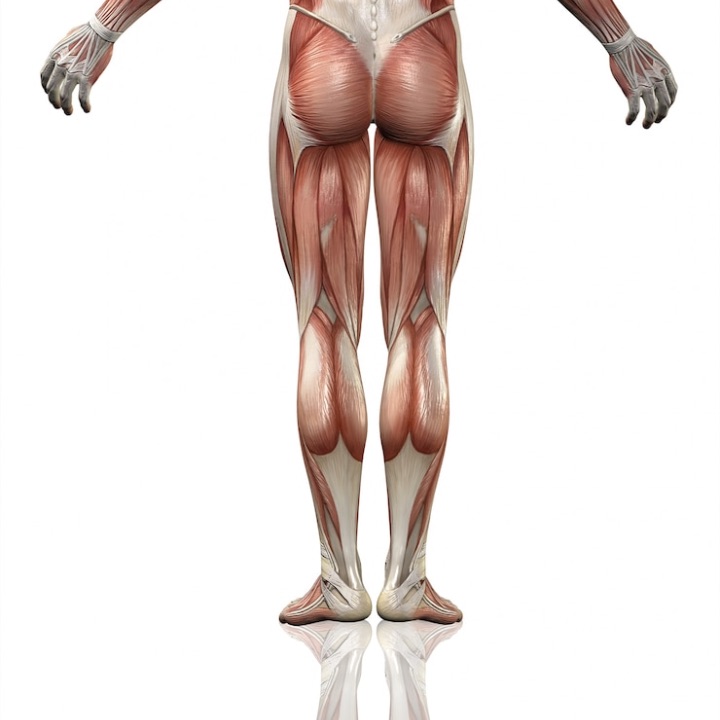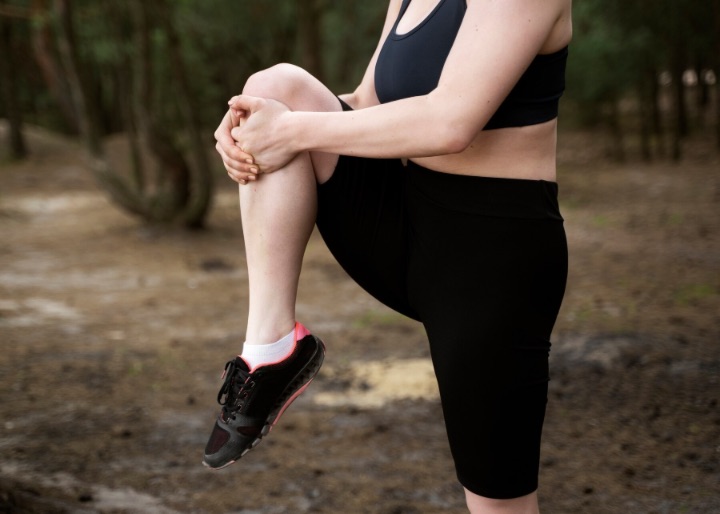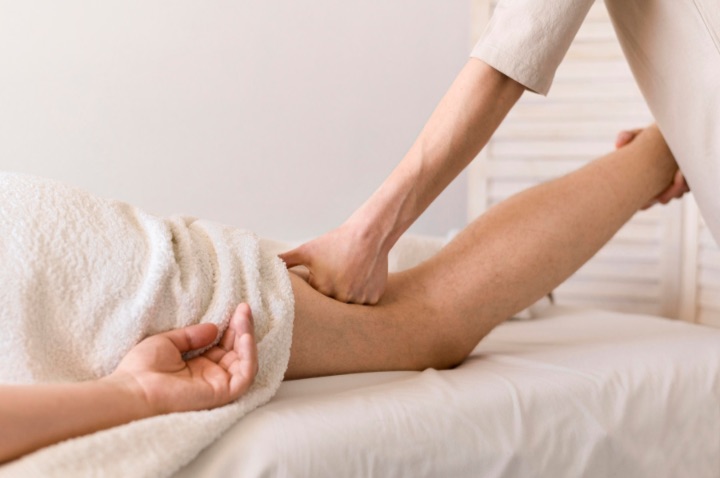A hamstring strain refers to an injury of one of the three muscles that make up the hamstring muscle group on the back of the thigh. Hamstring strains range from mild muscle tears to complete muscle ruptures. They are commonly caused by explosive movements like sprinting or stretching the hamstrings too far.
Understanding Hamstring Strains
- Definition – Stretching or tearing of muscle fibers in one of the hamstring muscles due to excessive force.
- Muscles affected – Semimembranosus, semitendinosus, and biceps femoris muscles in back of thigh.
- Causes – Sprinting, kicking, jumping, sudden extensions, poor flexibility, muscle injuries or imbalance.
- Symptoms – Pain, swelling, lesions, weakness, tightness behind knee.
- Risk factors – Poor conditioning, previous injury, reduced flexibility.
- Treatment – RICE, bracing, physiotherapy, medications, injections.
- Recovery time – Grade 1 strains take 3-4 weeks. Grade 2 strains 6-8 weeks. Grade 3 complete tears require surgical repair.
Hamstring strains are common in athletes. Protecting the hamstrings with proper training, strength and flexibility helps reduce injury risk.
Grading Hamstring Injuries

Photo Credit: kjpargeter
Hamstring strains are classified into three grades based on the extent of muscle fiber damage:
Grade 1 (Mild)
- Microscopic muscle fiber tears
- Mild pain, tenderness, tightness
- No loss of strength or range of motion
- Recovery within 2-4 weeks
Grade 2 (Moderate)
- Partial muscle fiber tear
- Moderate pain and swelling
- Some weakness and reduced flexibility
- Recovery within 4-8 weeks
Grade 3 (Severe)
- Complete rupture of the muscle
- Significant pain, swelling, and visible marks
- Loss of muscle function
- May require surgery
- Extended recovery time of 3+ months
Seeking early treatment optimizes recovery, especially with higher grade hamstring extensions.
What Causes Hamstring Strains? Risk Factors for Hamstring Strains
Hamstring tightness commonly result from:
- Forceful overstretching – Sprinting, lunging, kicking
- Explosive contractions – Jumping, changing direction suddenly invite risk of an acute hamstring injury
- Fatigue – Straining while muscles are tired, weak
- Poor flexibility – Tight hamstrings and previous hamstring injury are more injury prone.
- Muscle imbalance – Weak glutes and quadriceps overburden the muscle.
- Previous injury – Scar tissue predisposes to reinjury.
- Improper warm-up – Cool, tight muscles are more vulnerable.
- Poor conditioning – Weak hamstrings are susceptible to strains.
Reducing these modifiable risk factors helps prevent hamstring injuries.
Signs and Symptoms of Hamstring Strains

Photo Credit: Freepik
Here are some signs and symptoms you should be familiar with;
- Sudden sharp pain in the back of the thigh during activity
- Stabbing pain when extending or contracting
- Tenderness, swelling, bruising over the hamstring muscle
- Muscle spasms, cramping in the back of thigh
- Difficulty walking, loss of strength and range of motion
- Stiffness, tightness, burning sensation in the hamstring
- Difficulty straightening the knee, bending at the hip
- Pain when pressing on the hamstring muscle
Seek medical evaluation for proper diagnosis and grading of any hamstring injuries.
How are Hamstring Strains Diagnosed?
Acute hamstring strain diagnosis typically involves:
- Medical history – Details about injury mechanism, symptoms
- Physical exam – Palpation for muscle tenderness, flexibility and strength tests
- Stretch test – Pain, when flexing knee with hip extended, indicates tightness
- Imaging – Ultrasounds or MRIs visualize muscle tears in severe tightness
- Assessing gait – Inability to walk normally signals significant injury
Let your doctor know if an audible “pop” was heard or a large bruise formed, which indicates a severe tightness.
How are Hamstring Strains Treated? Hamstring Strain Treatment and Recovery
Treating hamstring strains focuses on controlling pain, protecting the muscle and restoring flexibility and strength.
Acute Phase
- RICE – Rest, ice, compression and elevation reduce swelling.
- Pain medication – Over-the-counter NSAIDs like ibuprofen.
- Bracing – Knee immobilizer brace limits tightness on injured muscle.
- Compression – Elastic wrap helps minimize swelling.
- Stretch avoidance – No extensions early to prevent re-injury.
Rehabilitation Phase
- Gentle stretches – Light stretches after 2-3 days when pain permits.
- Massage – Helps break up scar tissue and facilitate healing.
- Strengthening – Isometric exercises progressing to eccentric then concentric exercises.
- Flexibility training – Gentle lengthening helps reduce reinjury risk.
- Return to activity – Gradually resume normal activities without pain.
Modalities
- Heat/ice therapy – Alternating heat and ice relieves pain.
- TENS – Mild electrical stimulation helps reduce spasms.
- Ultrasound – Used to promote tissue healing in chronic strains.
- PRP injection – Platelet-rich plasma may speed recovery.
Surgery
- Repair – Indicated for complete muscle ruptures or severe tears detached from bone.
Proper rehabilitation for the prescribed duration is vital for full hamstring strain recovery. Sports medicine is recommended for patients with athletic leanings.
Prevention Strategies

Photo Credit: Freepik
Ways to help prevent hamstring strains include:
- Stretching and strengthening exercises to improve flexibility of the hamstring muscles and conditioning.
- Sports-specific training programs including eccentric hamstring exercises.
- Adequate warm-up before activity or competition.
- Massage to loosen muscles before intense activity.
- Proper conditioning to avoid fatigue and maintain strength.
- Good running and exercise technique.
- Wearing properly fitted, supportive footwear.
- Taping or bracing during activities for added support.
- Balancing flexibility with strength training.
- Not overtraining or pushing through pain.
Being proactive helps minimize hamstring strain injury risk long-term.
Return to Play Timelines
- Grade One – light training in 2-3 days, full activity in about 10 days if pain-free
- Grade Two – light training in 10-14 days, full activity in 3-6 weeks
- Grade Three – light training in 3-4 months, full activity in 4-6 months minimum
Training on acute hamstring injuries is dangerous. Follow your physical therapist or doctor’s staged progression protocol.
Recurrence Risk and Long-Term Outlook
Hamstring muscle strains, especially higher grade ones, carry a risk of reinjury since scar tissue formed after an injury is weaker than original muscle tissue. Strategies to reduce recurrence include:
- Completing the full rehabilitation program before returning to sport.
- Maintaining hamstring flexibility through disciplined extension.
- Continuing long-term exercises for strengthening.
- Warming up thoroughly before explosive activities.
- Wearing a hamstring sleeve or brace during activities for added support.
- Progressing training levels gradually upon return to activity.
- Avoiding overtraining and fatigue.
With proper acute treatment, rehabilitation and prevention strategies, most people achieve full hamstring strength and can return to activities pain-free. Report any recurring hamstring pain or weakness to your doctor promptly.
FAQs
How long does a strained hamstring take to heal?
Grade one mild hamstring strains take 2-4 weeks to heal. Grade two moderate tightness take 4-8 weeks. Grade three complete muscle tears require surgical repair and extended rehabilitation of 3+ months.
What is the fastest way to heal a pulled hamstring?
The fastest ways to heal a hamstring strain are immediate RICE treatment, rest, anti-inflammatory medication, bracing, massage, and gentle extensions and strengthening exercises once pain subsides.
Is walking good for pulled hamstring?
Walking is excellent for a hamstring that’s pulled as it promotes blood flow to aid healing. Start with short, gentle walks and increase distance gradually as tolerated without pain. Avoid long hikes early in recovery.
Is my hamstring strained or just tight?
Signs of a strained hamstring versus just tightness include a popping sensation when injured, pain when stretching or contracting the muscle, swelling and bruising. Just tightness causes only mild discomfort without acute injury symptoms.


